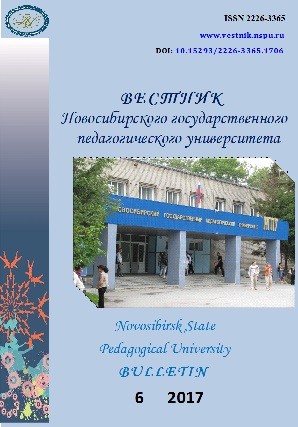Этапы освоения навыков тайцзицюань и уровни
управления движениями человека
The stages of mastering Taijiquan and the levels of human movements control
Author(s): Arina Viktorovna Murashova, Sergey Aleksandrovich Komissarov, Depei Liu, Boris Olegovich MayerSubject(s): Higher Education , Sports Studies
Published by: Новосибирский государственный педагогический университет
Keywords: Peking University of Sports; Teaching model; Levels of movement control; Training stages; Taijiquan movement; Human movement patterns; Beijing Sport University; Taijiquan teaching model; Human movemen
Summary/Abstract: Introduction. The problem of the study is in the contradiction between the description of Taijiquan teaching methods developed by Chinese specialists (circulation of qi, the transformation of yin and yang), and the basic principles of biomechanics and physiology of human movements, which are considered as a basis of the European paradigm of physical education and sports. The purpose of the article is to conduct a comparative analysis of Taijiquan teaching model developed at Wushu Institute of Peking University of Sports and Russian pedagogical tradition in the field of physical education and sports, based on the concept of levels of human control established by N. A. Bernstein. Materials and Methods. The methodology of this research is a detailed comparison of Chinese teaching methodology with the basic principles of psychophysiology of human control developed by N. A. Bernstein and applied in the pedagogy of physical education and sports. Results. Despite the semantics of description of the Taijiquan teaching model developed at Peking University of Sport in traditional Chinese terms, the training process is built on basic principles of physical education and sports instruction. This principles are based on N. A. Bernstein’s concept of human movements control levels, where all levels are consistently worked through, beginning with evolutionarily more ancient and ending with specific, inherent exclusively to higher mammals and human beings. Conclusions. The authors conclude that Taijiquan teaching model implemented at Peking University of Sports presents a specifically selected sequence of exercises, which are aimed at consistent training of levels of human movements control, from the deepest ones. This sets the statics of the trunk and neck, based on which the socalled "correct" body positions, specific invertebrate flexibility and motor coordination are realized in Taijiquan. There is no one-to-one correspondence between individual exercises of Taijiquan and a specific level of movement control, since a number of exercises affect two levels at once. In general, the "Beijing" model of Taijiquan systematically takes into account the hierarchy of human movements control levels, therefore, this model is methodologically and scientifically grounded.
Journal: Вестник Новосибирского государственного педагогического университета
- Issue Year: 7/2017
- Issue No: 6
- Page Range: 37-53
- Page Count: 17
- Language: Russian

